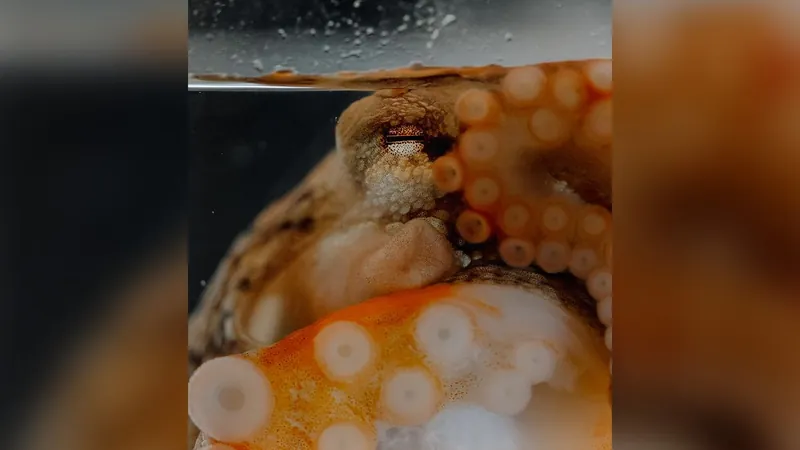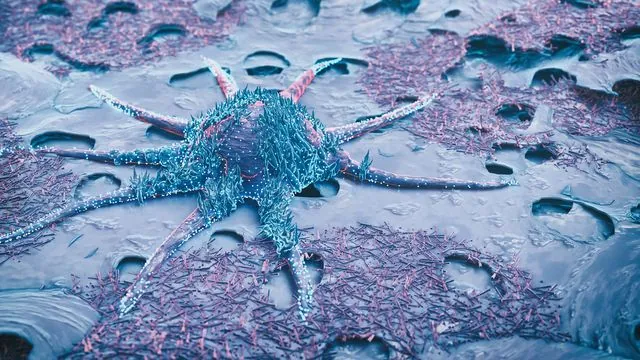
Shocking Discovery: Octopuses Burn More Calories Changing Color Than You Do on a 25-Minute Run!
2024-11-22
Author: Yu
Introduction
In a captivating new study, scientists have revealed that octopuses expend a remarkable amount of energy when they change color—roughly comparable to what a human burns during a 30-minute jog! This groundbreaking research can provide deeper insights into the biology of these enigmatic creatures and how they navigate their underwater world.
Energy Expenditure of Color Change
Octopuses are renowned for their incredible ability to blend into their surroundings, a skill they utilize to evade predators and stalk prey. However, understanding the energy cost associated with such rapid color changes remained elusive until now.
Expert Insights
“This study sheds light on the energetic trade-offs that octopuses face,” said Kirt Onthank, a marine biologist and professor at Walla Walla University in Washington. “While we’ve known about the benefits of their color-changing abilities, the energetic costs have largely gone unexamined. Understanding these costs will help us grasp the sacrifices these creatures make to avoid detection.”
Mechanism of Color Change
At the heart of this color-changing marvel are specialized organs in the skin called chromatophores. Each chromatophore acts like a small, stretchy pigment sac, which can expand or contract thanks to tiny muscles that function like spokes on a wheel. When relaxed, the pigment shrinks to a barely noticeable point, but when contracted, it stretches out to reveal vibrant colors on the skin's surface.
Chromatophore Density Comparison
To put this into perspective, octopuses possess about 230 chromatophores per square millimeter. Comparatively, a 13-inch 4K laptop monitor has approximately 180 pixels per square millimeter, showcasing the incredible detail with which octopuses can change their appearance.
Research Findings
In a fascinating study published in the Proceedings of the National Academy of Sciences, Onthank and his research team investigated the oxygen consumption of 17 ruby octopuses (Octopus rubescens) while they underwent color transformations. The researchers found that an average octopus utilized around 219 micromoles of oxygen per hour to change color—an amount equal to their overall energy expenditure at rest.
Human Comparison and Implications
When translated into human terms, this means that if humans had the ability to change skin color like octopuses, we would burn about 390 extra calories daily due to this process—similar to the calories burned during a 23-minute run!
Other Animals with Color Change Abilities
While cephalopods are the undisputed champions of rapid color change, they aren’t the only animals with this remarkable skill. Various other species across the animal kingdom, including amphibians, reptiles, fish, and arthropods, have independently evolved the ability to change color. However, what sets cephalopods apart is the speed and precision of their transformations, which greatly surpasses that of animals like chameleons, whose hormonal color changes are both slower and potentially less energy-intensive.
Future Research Directions
The researchers aim to extend their analysis to other cephalopod species and delve into the energy expenditures of deep-sea octopuses. Understanding these energetic dynamics will inevitably unlock further mysteries about octopus biology and their mesmerizing existence beneath the waves.
Conclusion
With this eye-opening discovery in mind, it's clear that these fascinating creatures are not just masters of disguise but also energy-efficient athletes in the aquatic world! Stay tuned as scientists continue to unravel the complexities of octopus life and the incredible adaptations that have allowed them to thrive in diverse ocean habitats.




 Brasil (PT)
Brasil (PT)
 Canada (EN)
Canada (EN)
 Chile (ES)
Chile (ES)
 España (ES)
España (ES)
 France (FR)
France (FR)
 Hong Kong (EN)
Hong Kong (EN)
 Italia (IT)
Italia (IT)
 日本 (JA)
日本 (JA)
 Magyarország (HU)
Magyarország (HU)
 Norge (NO)
Norge (NO)
 Polska (PL)
Polska (PL)
 Schweiz (DE)
Schweiz (DE)
 Singapore (EN)
Singapore (EN)
 Sverige (SV)
Sverige (SV)
 Suomi (FI)
Suomi (FI)
 Türkiye (TR)
Türkiye (TR)